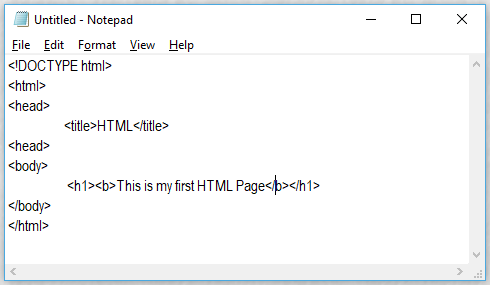“I do not expect India of my dreams to develop one religion, i.e., to be wholly Hindu or wholly Christian or wholly Mussalman, but I want it to be wholly tolerant, with its religions working side by side with one another.” – Mahatma Gandhi
In
the past, the political power was the handmaid of the religious authority. The
priests both in the Hindu Community and the Catholic were the main advisers and
even in some cases, the chancellors of the king. The policy of the state was
controlled and directed by religious considerations. The state, as a matter of
fact, was then theocratic.
The
concept of this theocratic state, though yet exists in some Islamic states, is
now replaced by the modern ideal of the secular state that has become an
important element in the political life of a modern community.
Secularism,
a new political concept no doubt, means the complete elimination of religion
from the political activities of the state. This implies two things. In the
first place, there is no interference by the state in religious matters or any
attempt by any political authority to dominate any particular religion. In the
second place, the state does not patronize any particular religious community.
A secular state, in fact, is a state in which all citizens enjoy equal
protection from the state in all religious matters and everyone has freedom to
practice his or her religion, without affecting the religious freedom of
others. The slogan seem all plain here -
“Have your religion and let others have their own.”
Secularism
originated in Europe in the wake of the cultural resurgence during the
Renaissance. The supreme power of the Catholic Church was gradually curbed by
the growing monarchical power and the rising intelligentsia. The church was
allowed to function and dictate only in people’s personal religion and its
political power was all usurped by the secular authority. That was the
beginning of the concept of secularism.
The
essence of secularism lies in the ample scope that is provided to every
religion to express itself, freely, fearlessly, and without any interference.
Of course, this does not at all mean the licence to do or say anything, in the
name of a particular religion, against the accepted norms of social life or the
natural faith of a community. What is cardinal here is the free exercise of
religious rights or freedom by everyone in the community. Secularism is not
opposed to religion or even to the rigidity of personal faith, but what it
objects to is religious intolerance and bigotry. Tolerance and equality in all
religious matters form the true basis of secularism.
Secularism
is a lofty ideal to promote goodwill, justice and liberalism. In any modern
state, in democracy as well as dictatorship this is found to be an inevitable
necessity for strength, harmony and solidarity. Unity, amity, and prosperity
constitute the three-fold blessed effect of secularism, if rightly understood
and properly put into application.
It
is here – in the matter of right understanding and application – that
secularism often fails to achieve the much expected result and is entrapped in
unhealthy tangles. Of course there may not be any such tangle if people profess
a common religion and have no religious distinctions among them. But, in a country,
like India, where diverse religious communities live, specific caution and
wisdom are much needed. Even factionalism and fanaticism in the same religion
have led to ethnic violences in some Islamic states in recent times.
In
fact it is not found seldom that the essence of secularism is misinterpreted
ignorantly or deliberately and wilfully. Secularism, as already seen, ensures
the equal protection to every religion and does not endorse the patronization
of any specific faith or creed. Equality in the eye of law is required not merely in social life,
but also in religious faith and practices. One Bengali poet has trumpeted
clearly a high slogan in this respect – “SabarUpareManushSatyaTaharUpareNai.”
(Man is greater than all and there is nothing of a greater value.)
Unfortunately,
the sacred precept of equality is often ignored in the application of
secularism. Particular religious communities or specific faiths are found
appeased on different occasions, of course with a selfish political or partisan
motive. But any kind of appeasement is in contravention of the real
significance of secularism. This is liable, quite naturally, to create
misgiving in a particular religious community about the impartiality of the
authority concerned. The appeasement of any religious community, whether
majority or minority, in the pretext of secularism, is glaring in no new facts.
The
moral of secularism is really blatantly undermined, if, on the plea of
secularism, a particular religious community, be that minority or majority, is
given some specific privilege. Secularism in its true sense, ceases to exist in
such a context. Yet, unfortunately enough, this is not uncommon in a country,
like India, that professes to be strictly secular.
In
fact, in their professed zeal for secularism, rather strangely interpreted and
followed, the authorities concerned are often found to act, without the least
of reason, justice and impartiality. On the one hand, the peaceful religious
procession of one community is not allowed to pass by the side of a place of
worship of another, lest this should lead to any communal disharmony. On the
other hand, loud prayers and chants are permitted, much to the annoyance of
peaceful inhabitants, even during the odd hours of the day, for according
religious freedom. The indiscriminate play of the microphone, the reckless
erection of shrines, temporary or permanent, even on public roads and inside
public places, the forceful collection of subscriptions openly and even from
public and private vehicles on religious occasions and similar unlawful and
vexatious acts are strangely approved or silently permitted. There is allowed,
as a matter of fact, in the supposedly cause of secularism, a queer
conglomeration of restraint and licence, liberty, and lawlessness. The actual
result is not to secularise but to appease one or the other community, of
course with an ulterior political motive. This is definitely an erroneous,
rather dangerous application of secularism.
Such
an application, wrong and injudicious, to appease is more glaring in some cases.
A particular community is exempted from the operation of a general law,
applicable to all other communities. It is quite justifiable for other
communities to question such an exemption and to doubt the motive of the
government here. Again, financial grants are liberally given, without perfectly
admissible strings, to the educational institutions, run by some religious
minorities, while no such occasion is granted in other cases. The principle of
the equal application of financial rules, no doubt immensely important, is
found openly violated in such cases. Religion, a matter of private life, comes
to possess a special and advantageous status in public life in respect of some
particular community. Can this be taken anything but appeasement, even in an
indirect one, purposely? Can this solve in any way the noble cause of
secularism, except to embitter the relationship between two or more
communities? Answers are obvious, after all, a favourite has no friend.
Indeed,
all this well bears out that there is no sincere pursuit nor serious
appreciation of the value of secularism. The actual achievement, as such, is
hardly viable and esteemable. What is factually achieved, is the co-existance
of diverse sorts of religious fanaticism for the selfish gains of political
parties or personalities. Secularism is loudly acclaimed, as a theory, but very
seldom followed in practice.
As
a principle, secularism is, indeed, laudable, but to make it so in practice
requires sufficient caution, comprehensive wisdom and appropriate training. No
short-term patch-work of political convenience serves any real purpose here. A
cautious division between the practice of religion, as a private inspiration,
and the power of the state, as a public authority, is the first requirement
here.
Religion
is exclusively a private affair, a personal belief, practice, or leaning. It
has nothing to do with any public duty, obligation, or function. A particular
person definitely enjoys freedom to pursue a particular faith, but that does
not permit him, as already stated, to exercise his religious right, without the
least heed to peace and order in public life, nor does this exempt him from the
operation of any general rule or law. In fact, he is his own master in his
worship at his home or shrine, but he is never free to goad his private
religion in public life. Religion, a matter of personal choice, casual or
deliberate, a purely private pursuit, is to be scrupulously separated from
public duties and obligations, inviolable to all citizens. Secularism is to be
very cautiously pursued here, without infringing personal faith or
contradicting the laws or rules in force.
What
more is needed is wisdom, and not political opportunism, in the exercise of
secularism. How far religious freedom, as a personal matter, is permissible and
to what extent the intervention by the government may be necessary to retain
social harmony and the rule of law, are to be wisely determined. Political
advantages may be reaped out of the maneuverable method of secularization, but
nothing less than a sincere, straight-forward and steady application of
secularism, without fear or favour to anyone, is the need of the hour.
Unfortunately,
there is much show of enthusiasm, but no sincere interest in the establishment
of secularism on a firm footing in India. The purpose here till now is
political, neither social nor humanitarian. That is why the pursuit of
secularism remains a myth, and not a reality yet.
Secularism
is no grand name in particular manifesto. It is a true culture of a nation and
adequate nurture is much required to make it a part of the natural aspiration.
Young learners are to be taught, in a simple and apt manner, what this truly is
and why this is to be cherished. When a mind is fresh and soft, it can be
shaped and moulded by proper guidance. The cultivation of the concept of
secularism can be best achieved at this very state of mind. Lessons from great
religious teachers, belonging to all communities, are to be given, with care
and interest, in all institutions, as a part of the national educational
scheme. The child of today, if rightly guided in this way, will prove to be the
true father of tomorrow, in whose hand secularism will be absolutely safe and
communal harmony, perfectly preserved. The story of the old farmer and his
quarrelsome sons is true for all times and the lesson of the unity of strength
is unfailing for every responsible citizen of free India:
“United we stand, divided we fall.”
By :-
Sucharita Chakraborty.
sucharita530@gmail.com
sucharita530@gmail.com
Content Writer Intern, wordsclank.













